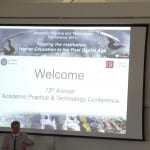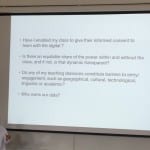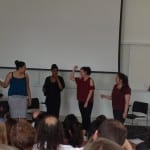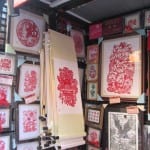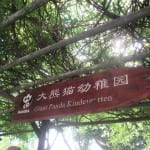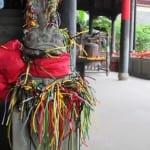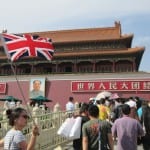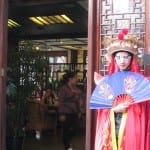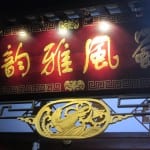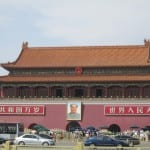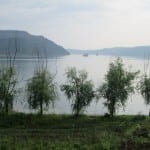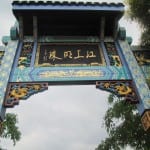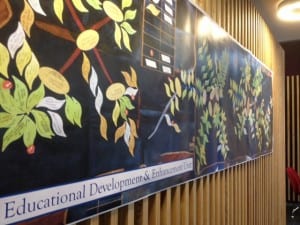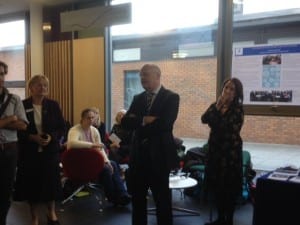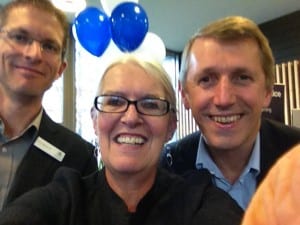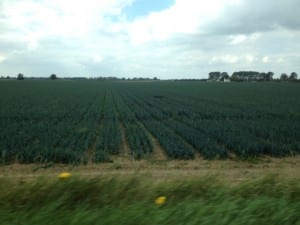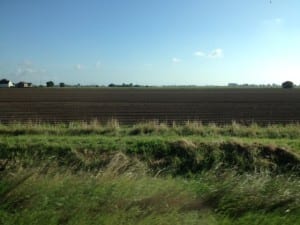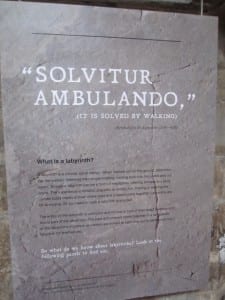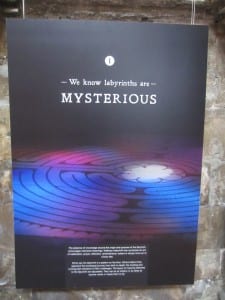I now have a new permanent WordPress blog called the Digital Academic at https://digitalacademicblog.wordpress.com
Category: Uncategorized
Tumbling towards Ecstasy
Gas! Quick, boys! – An ecstasy of fumbling,
Fitting the clumsy helmets just in time;
But someone still was yelling out and stumbling,
And flound’ring like a man in fire or lime.from
Dulce et Decorum Est
Wilfred Owen
Another corner of the internet
I’m digitally splattered here, there and everywhere online. My relationship with my laptop spins me off in all directions. I needed a new blog and Tumblr seemed to offer another corner of the internet – with my name on it – so I took it.
For the time being I am at http://ammonitie.tumblr.com/ My new blog is a subpage called TEL it as it is http://ammonitie.tumblr.com/lifeinhull a play on my new role as Technology Enhanced Learning Advisor – or is the subpage Life in Hull? It’s hard to tell with Tumblr. Like most things in life, when it comes to WordPress I’m learning more from its absence than I did from its presence!
Having a blog is essential. You can’t support TEL unless you’re in there, using it for yourself. Otherwise it becomes like those obligatory PGCert technology sessions delivered in the classroom, which works out fine because most participants are not great TEL users in the first place. The internet has changed life as we knew it but in many HEIs life goes on much as before.
TEL advisors and education developers need to be into TEL but not too much otherwise you risk becoming so TEL-evised you stop seeing the analogue roots and practices. TEL – and there should be a TET or a TELT too (technology enhanced learning and teaching – you read it here first!) – TELT is about the impossible balance. Namely being in two places at once and seeing both sides of the story. But as confortable and familiar as it feels to be back in my original work blog again, sadly this is no longer the place for my reflections.
I’m not a fan of Tumblr. It ‘s not as flexible as WordPress . It feels hidden away from my higher education networks and I don’t like the recommended sites which come up on my home page. Tumblr feels more like wasting digital space than using it authentically but I’ve still enjoyed setting it up, constructing a different identity, playing with new ideas and exploring how content management systems have changed, in particular the extent to which they assume digital knowledge and experience.
Blogging is promoted as a serious educational tool but the learning curve required to get started with platforms like WordPress and Tumblr is huge for anyone new to working with digital media. Tumblr is giving me the space I need at the present time and is also giving interesting additional insights I didn’t expect.
I’m still on Twitter as @suewatling and my new email is s.watling@hull.ac.uk
How lucky I am says Pooh to Piglet
#BbWorld15 part one; Peter Diamandis Keynote
You think your world is big. Then you travel and realise it’s small. You think you’re open to new ideas and ways of being. Then you come face to face with the future and realise how little you know.
At last year’s Blackboard World Conference, the closing keynote was given by Geoffrey Canada. I thought it would be a hard act to follow but Blackboard managed it. Peter Diamandis (XPrize Foundation, Singularity U and much, much more) called his talk Innovation and Disruption on the Road Ahead. Opening up to how exponential technologies are changing our lives – now as well as in the future – this video from YouTube is an example.
In the book Abundance, Diamandis includes the development of AI by the name of Watson. Like millions of others, I watched Watson play and win Jeopardy.
That was four years ago. Today Watson has moved on from downloading Wikipedia and is now on the cloud, moving into medicine. The plan is a partnership with medics so they no longer need to memorise a mass of information but can ask Watson instead.
We’re told the difference between Watson and Google is Google offers information, while Watson represents knowledge. Soon everyone will be able to connect to Watson via a mobile phone. How scary is that! What are the safeguards Hal? What will this mean for the future of higher education?
We are living in a world of perfect knowledge. A data driven world. LEO satellite constellations orbit the earth, watching and recording. Drones are getting smaller; more inconspicuous, anonymous and disposable. Google cars carry a LIDAR device on their roof to gather and interpret data. There is no such thing as privacy. Diamandus tells us robotics will displace 48% workforce. Will they displace me? What will happen to art and creativity? Only a few weeks ago the Guardian ran a piece on the neural networks of software; Yes, androids do dream of electric sheep
3D printing is turning abstract ideas into concrete realities in 300 different materials. How many more will be available by next week, month, year?
3D cars have been printed.
In China, Winsun have printed 3D houses.
Biometric devices like the Google contact lens can test glucose levels in tears for diabetics.
Virtual Reality is the next educational revolution. Oculus have been bought by Facebook. The future is Microsoft Windows Holographics where the virtual and the real come together.
This is not science fiction. It is already fact.
If this is what we know, how much more don’t we know? Where does this leave virtual learning environments like Blackboard and the traditional ideas of school, college and university – already being challenged by the internet.
BBWorld15 offered extremes. On the one side Diamandis tells us to disrupt before we are disrupted, while on the other presentations called for attention of digital divides.
99% of the conference involved 3000 delegates sitting and passively listening. We might have the technology but how much difference is it really making to way we operate, in particular within the educational sector? More thoughts on this in BBWorld15 Part Two.
#uogapt elearning, eteaching, eliteracies part two
Flipping the Institution at Greenwich #uogapt defined the post-digital age as taking computers and the internet for granted because they’ve always been there. But there are risks. The internet is exclusive. Digital access parameters replicate and reinforce existing categories of disempowerment. While those who are connected are increasingly tracked and monitored those who are disconnected are digitally discriminated and increasingly invisible. The post digital world is surveillance heavy and divisive.
Flipped learning ‘s focus on placing digital resources online provides timely opportunities to revisit what it means to develop digital literacies for all users; students and academics. Digital literacies have morphed into digital capabilities, the Jisc seven elements reduced to six and no one mentions SCONUL’s digital literacy lens anymore – which is a shame because it was explicit about the risks of digital divides.
Teaching decisions can constitute barriers to access and engagement and speakers Jonathan Worth, David White and Helen Beetham made reference to the risks of being digitally connected and disconnected. Their presentations reinforced the value of events like these.
Here are my key takeaways from the day.
If you are not on twitter you are excluding yourself from relevant conversations.
The first waves of technology was plugging it in and using it. The second post digital wave is using it innovatively.
Open education demonstrates the facilitation of learning through the use of social media for example Jonathan Worth’s open access photography course http://phonar.org/ #phonar
Other links worth following: Coventry University’s Disruptive Media Learning Lab http://dmll.org.uk #disruptivebytes and Speaking Openly http://speakingopenly.co.uk/ #speakingopenly. Visit Audrey Watters and Hack Education Read Dragnet Nation by Julia Angwin on the world of electronic surveillance
Digital Wellbeing means taking steps to know mobile devices track and store data about us. Quick surveillance check for iphones – go to Settings > Privacy > Location Services > System Services > Frequent Locations to see how you are monitored.
Questions to reflect on.
- What does inspiring teaching look like in a post digital age?
- Will the TEF include a measurement of digital engagement?
- How can reluctant and resistant academics be encourage to engage with virtual learning as more than an electronic repository of content?
- One outcome of post digital is the expectation people will be available online 24/7 in particular for work responses to emails. Is this right, fair or sustainable?
- Staff and students need to know how to construct and maintain professional digital identities and reputations. What we do online today in the digital world may influence future opportunities. How do we support digital responsibility?
Teaching decisions can constitute barriers to access and engagement. The digital amplifies existing inequality. We should all take personal responsibility within digital practices to recognise the potential for exclusion. Tackling digital exclusion needs awareness which leads to action. Digital exclusion is being rebranded by Jisc as social responsibility. There is a risk the reality of digital divides and exclusions will get lost in this change of language. Those within the digital sector might be aware of the inner meanings, but those outside will not.
The employability agenda is turning students into products for employers. This commodification reinforces the need to focus on ‘sense of self’ in the post digital age. We need to be equipped to live in a digital world. Like Media Studies taught students to deconstruct images to see the hidden discourse beneath, students now need to understand how social media frames them.
Multimedia is the new measure of digital literacy with video replacing text and image as preferred means of communication.
PechaKucha are short, sharp bursts of creative energy which challenge you to be concise and digitally capable. The format at Greenwich was ten slides in ten minutes which was fine; developing presentations like these would support digital confidence.
The student voice at Greenwich included a set of mini dramas showing the student side of ‘post digital’ education and a final reminder of how it’s the face-to-face experience which still has the power to educate and entertain.
China; the end of the journey
Four weeks on and my Chinese adventures are fading. The folder of digi-pix on my laptop and shared memories with friends are all that reminds me of my amazing journey. I saw and heard the China of my imagination and childhood dreams; the traditional music, stick puppetry, Sichuan opera and a changing faces display with real fire where masks and clothes were switched in a blink of an eye – in less than a breath. Too quick to photograph.
I loved the calligraphy, the visual style of writing with images instead of letters, and the art of paper cutting, a simple idea made complex. It makes 19th century English silhouettes look primitive.
I saw China as it is today; a rapidly developing country with massive construction projects, overcrowding, air pollution, limited sanitation and bad water.
The colour green surprised me; it was green in the parks and gardens, paddy fields, bamboo forests and tea plantations. Traditionally the Chinese have always lived in harmony with nature. It was Mao who said nature was there to be dominated and controlled. Today the Chinese say Mao was 60% right. They are renewing their relationship with the natural world. New cities incorporate public parks and gardens. Chengdu, which has adopted relaxation as its mantra, promotes recycling and green attitudes.
The Yangtze river was 57 shades of green, reflecting the sides of the wooded gorges, which used to be the tops of mountains.A stark white water line was a permanent reminder of how the Three Gorges Dam represents one aspect of nature still very much under control.
I don’t think I’ve mentioned the pandas yet.
My closest previous encounter was Chi Chi who lived at London Zoo. By the time I saw her she was stuffed behind glass in the Natural History Museum. In China I saw my first living pandas at the Breeding Centre outside Chengdu.
Pandas get up, eat bamboo, then sleep. You have to be there early. Bamboo is hard as rock, and so tough it’s used as scaffolding poles. Their powerful teeth and jaws crunch it like sugar. You hear the panda before you see it.
Pan Da translates at Fat Big and generations of emperors killed pandas for their pelts. In 1949 the Panda was put under protection. A 2014 census found 1864 giant pandas in the wild. The WWF claims this is an increase of 17% from the late 1970s. The black and white panda is from the bear family; the red panda from the racoons. At the breeding centre we were surprised by a red panda which dropped from the trees onto the platform, staring at us intently before turning its back and walking away.
Another traditional symbol of Chinese culture is the dragon. They are everywhere. Old and new. Past and present. Dragons are the heart of myth and legend. Like great floods and creation stories, they exist across countries and cultures, each with their own version, The dragon is the only mythical animal in Chinese horoscopes. It’s the sign of rulers and leaders. Everyone wants to be a dragon.
We all left something of ourselves in China. My new panama hat was accidentally abandoned in Beijing. One friend mislaid her raincoat in Chongqing while another put her valuables in the hotel safe in Chengdu and left them there. At least they were secure and retrievable. Not like the fellow traveller who lost his passport and had no idea where it might be. He also lost several days of his trip applying for the essential paperwork for our internal flights – which was manageable – and to leave the country – which was not. At the end we left him behind, still waiting for the replacement visa and papers needed for a temporary passport, hoping to transfer his tickets to a different flight. Losing your passport is never advisable but losing it in China is probably the worst place of all.
My credit card was hacked. 48 hours after Xian, its details were being used in Saudi Arabia. The NatWest fraud squad sent texts asking if this was legitimate and blocked the card. Pin codes on transactions were uncommon. Most places asked for signatures. It showed the value of taking a backup card and keeping your phone switched on.
Two people got lost. Unable to read the signs or speak any Chinese, they couldn’t find their way back to the meeting point. We understood then why the guide was so insistent we had her phone number at all times. It emphasised the vulnerability created by our lack of linguistic skills.
I returned home with renewed respect for our Chinese students dealing with the complexity of English language and custom. I realised the difference some Chinese signage around the university would make, and recalling fellow travellers carrying forks in their backpacks, I wondered why there were no chopsticks in the Atrium. I felt I gained a better understanding of the potential for confusion with our self-service style food and how easy it was to misunderstand the difference between gravy and custard. While I was away the Quad Diner opened a King Asia Noodle bar; its menu including noodle broth, Szechuan beef, Char Siu pork, Gyoza and Wantons.It reminded me how strange it is when food is unfamiliar.
All I knew about China was through books and films but this type of knowledge is only ever based on simulation. Anderson (1983) and Baudrillard (1994) have much to say about the nature of reality. In times east and west collided. One restaurant served us a plate of pale limp chips, a concession to dietary expectations. It looked out of place but was pounced on with cries and sighs of relief. The reality of travel is to leave behind the familiar and step out into the strange but sometimes the strange is dealt with badly. We can’t always help it. I’ve been asked several times if I would go back and I think I would – but there are other countries to visit first!
Anderson, B. (1983) Imagined Communities. Reflections on the Origin and Spread of Nationalism, London and New York, Verso
Baudrillard, J. (1994) Simulacra and Simulation, translated by sheila Faria Glaser, Ann Arbor The University of Michigan Press
April in China
Where to begin? Chengdu, Chongqing, Xian, Beijing were all unique. Chengdu is the relaxed city, its parks designed for leisure, drinking tea and playing Mahjong. Chongqing is an eastern Manhattan, high rise buildings squashed on a thin peninsular between two rivers. Xian is an old walled fortress, home of the terracotta army while Beijiing is all about business and money, host to the 2008 Olympics, famous for Tiananmen Square and the Forbidden City. Linking west to east is the Yangtze River, its valleys flooded by the Three Gorges Dam, viridian waters mirroring green forested mountains, lost towns and villages drowned below. Urban and rural landscapes were smoky, covered by a smog blanket. New concrete highways contrast with areas where villages tend their own bit of road. These range from smooth tarmac to bone shaking rubble. Every bit of space is utilised for food. Gardened patches grow under massive flyovers. Paddy fields line the side of huge motorways while tea grows on terraces cut into every hillside. Roads are congested but bullet trains and internal flights remain slick and efficient. The toilets were a culture shock. Food was low fat and dairy free with no sugar; instead it was rice and vegetables with small amounts of chilli’d meat or fish eaten with chopsticks – every meal served with chilled local beer. Drinking water was bottled while drinking tea both ceremony and art. You swirl and sniff before downing tiny tumblers or use the lids of larger cups to scoop the leaves to one side. A covered cup means this place is taken. An uncovered cup says fill me please.
Besides walking the Great Wall, it was the unexpected which most surprised. The Huguang Guild Hall at Chongqing; my first experience of old China was a delight. I loved the Shu Feng Ya Yun Sichuan Opera in Chengdu and the Shibaozhai pagoda on the Yangtze, the ‘purple rain pavilion’, preserved as river levels rose so it was no longer the top of the mountain but now just above the water line. Old China has been recognised as a cultural heritage to be saved rather than destroyed. This has created unexpected juxtapositions and occasional confusion between real and imitation. History seeps from every arched roof and curved dragon. These old buildings breath a lost culture and lifestyle. The Winter Palace itself was amazing. I had no idea of its size. Like a Russian doll, every courtyard opened out onto another and another – each more ornate – with whole villages of buildings and squares on either side. This was the China I’d hoped to see.
But what about the problems? I remember 1989, the images of the lone protester in Tiananmen Square and subsequent action by the military. Before I left, I read up on the Cultural Revolution and all the facts I could find on restrictions to human rights, none of which are unique to China. They exist in one form or another in other continents and countries around the world. There are no excuses for cruelty wherever it’s exposed but I don’t regret going. My lasting impression is the friendliness of the Chinese people, their curiosity about us as westerners – with big noses. We were stared at and asked to be photographed. I think what touched me most was the acceptance of everyone we got to talk to about their life experiences and hopes for the future. Always there is hope for something better. In the most difficult of circumstances, life goes on in universal cycles and of all the wonderful places I visited, the best thing about China was the people.
It’s official! EDEU-cate are us…
EDEU has officially arrived! We’ve been percolating for a while. It started in June when the creation of EDEU was announced at the Festival of Teaching and Learning. By August we were packed and ready to leave our Bridge House home for new EDEU shaped adventures. On 1st September we moved into One Campus Way with new members of staff and a week later had our first EDEU-shaped AwayDay On Tuesday 22st October at @4.30 VC Mary Stuart and DVC Scott Davidson formally welcomed EDEU into existence.
We’re almost but not quite a full team. By January everyone should be in post and finding their way around campus; One Campus Way is good for exercise. There is an expectation EDEU will have impact. We will be implementing the Teaching and Learning Plan, Digital Education Plan and Student Engagement Strategy. As well as the institutional shapers of our remit, a key question is ‘What can EDEU do for you?’ To begin the conversation during the launch event, Kelly bought a big pot for ideas.
Suggestions were written down and left behind. They included a broad mix of teaching and organisational issues. We’re going to be busy! Not that we weren’t busy before but there’s an additional layer of expectation that comes whenever extra resources in put into place. Also new team conversations leads to new ideas in particular on supporting the development of multimedia resources and workshops around critical reflective practice and academic writing. It looks like exciting times ahead. In short, EDEU is a great place to be. EDEU-CATE are us 🙂
EDEU Week One; moving to the edge, space shaping and team making
The National Centre for Food Manufacture (NCFM) at Holbeach was in the news this week The NCFM hosted one of a series of workshops on PicknPack dissemination. Funded by the European Union Seventh Framework Programme, PicknPack is a flexible robotic system developed to automate food processing and packaging.
The role of food packaging is a thankless one. Designed to be functional and attractive, it ends up in the bin, destined for landfill, but I guess you’re not meant to think of it that way.
Travelling between Lincoln and Holbeach is to journey through a showcase of local production. In spring the fields are full of daffodils and tulips; in September there are leeks, sweetcorn and cabbages, always cabbages. Colours range from wheaten gold to ploughed-earth chocolate brown; all under the broad, deep Lincolnshire skies.
This week two Digital Education Developers joined EDEU and it was a pleasure to include a trip to the NCFM as part of their induction. Chavan Kissoon was e-learning guru for Work Based and Distance Learning in the Business School at the university and Marcus Elliot joins us from Grimsby Institute. Chavan will work with the College of Social Science and Marcus with the College of Science. I’m still waiting for my DED (apologies for the acronym) for the College of Arts. A third Senior Lecturer in Educational Development or SLED (we did slightly better with that one) will also be joining EDEU. By January 2015 we should be complete.
The move to the edge was eased by the facilities at One Campus Way; continual supplies of coffee and a special welcome from EDEU Director Dr Karin Crawford; for picky eaters like me the fruit was welcome 🙂
Week One has been good. The rest of the team, Dan Derricott and the Student Engagers, arrive on Monday. Next week is our first full team Awayday. EDEU is taking shape.
 That’s me in the corner. The door to the meeting room is locked making the space into a 3-sided room.
That’s me in the corner. The door to the meeting room is locked making the space into a 3-sided room.
There’s no direct light shining on my screens and I have my own bookcase (already filled with a cunning plan to encourage book returns)

Duck and Spider have arrived. I’ve yet to introduce the wider EDEU team to the phenomena of Rubber Duck Debugging That will come. As for Spider, it’s 14 years old and interesting to reflect on the changes since I first built the Achievers in Excellence website in 2000. In 2014 we weave with modules and plugins from content management systems rather than direct html. I’m left wondering if any other generation has seen so many changes happen so quickly. EDEU are in an excellent place to take the university’s remit for digital education forward.
Lincoln Labyrinth Festival; they say God works in mysterious ways
During August, a labyrinth was chalked onto the stone floor on Lincoln Cathedral and visitors invited to walk the twisting path into the centre and out again. In the arches on the right were a series of information panels. My connection with labyrinths goes back many years. The interest led to Walking the Labyrinth, set up to document their use within higher education, in particular as tool for learning development. What we know about labyrinths is contentious and for me this is part of the attraction. Because they’ve kept their secrets around their origin and use so well, they have become a vehicle for a number of different interpretations.
When I wrote the text for the labyrinth festival, my aim was to bring together what is known based on what can be evidenced. I wanted to emphasise a labyrinth is not a maze, despite what the Oxford and other dictionaries say, and to reveal how the symbol is old, more ancient than the church itself. I thought I was writing with accuracy and respect but with hindsight I think I may have been naive. The experience is helping me rethink my research, in particular how we know the world. The ologies of Ont and Epist, which I’ve struggled with since the beginning, are best understood through application to daily life.
From the start I wanted the panels to narrate the story of the labyrinth, step by step, from past to present. In my mind the words would run from top to bottom and be supported with appropriate – but secondary – images. Instead the images were given priority and the text squeezed into a block; positioned too small and low to be easily read while the plan to reproduce this as an information leaflet to take away didn’t happen. Other panels, laid out in the style I had imagined, were more accessible and stressed the connection between the labyrinth and christianity. Reading these, I saw how my text could appear as if I was trying to do the opposite.
Critical Realist Roy Bhaskar (1978) wrote about an ontological distinction between three domains of reality: empirical (observed reality), actual (interpreted reality) and causal (generative reality or mechanisms of change). We bring to empirical situations our existing knowledge which in turn shapes our expectations; but knowledge is fallible and constantly open to change. I walk into Lincoln Cathedral with the expectation I’ll be surrounded with design appropriate to the Christian religion. This interpretation derives from the sum experiences of my life (my actual domain of reality) which are reinforced whenever my expectations are confirmed. The labyrinth text introduced a causal reality i.e. something different and possibly unexpected within the context of the cathedral. For me labyrinths can be both secular and sacred and I set out to bring the two dimensions together. I don’t feel I succeeded but maybe I have a better understanding of why this was so.
To often we can’t ‘see’ from the inside. It takes the alchemical process of reflection on action to produce insight. With hindsight I may have been blinkered by my own ‘actual’ reality. Excited by the possibilities of promoting the labyrinth symbol within the cathedral walls, and able to rationalise the secular/sacred duality within my own mind, I failed to grasp how this might constitute a challenge – however small – to the institutional ideology of the church. The reduction of a message which was outside of doctrine – albeit in my mind running parallel – diluted the opportunity to pass on this knowledge.
Regardless of the faux pas-panels, the highlight for me was the central position of the labyrinth itself; precisely chalked across the nave, and seeing people take the time to walk the circular paths. Solvitur Ambulando. It is solved by walking. There was a moment when the sun shone through the stained glass windows and cast coloured patterns across the stone floor, lapping onto the outer paths of the labyrinth. I’m not sure I’ve been in a church when this has happened in such a spectacular manner. Maybe God was working in a mysterious way after all.






